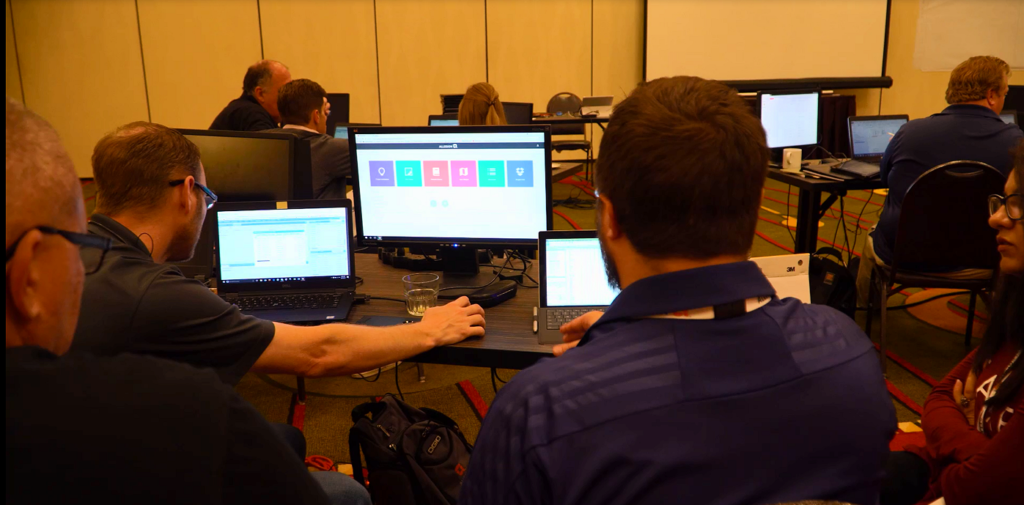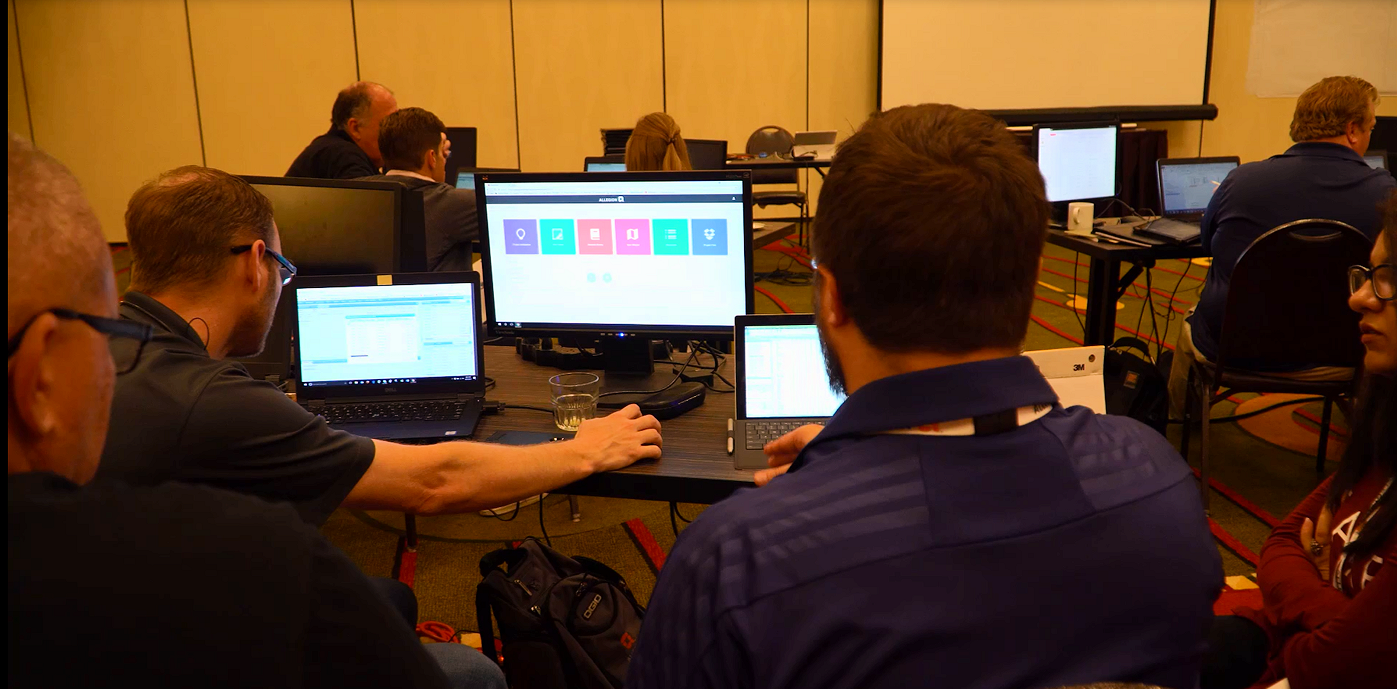This website exists in part because of the complexity of doors and hardware – if it was easy, it would be called “easyware,” right? Well, in hopes of simplifying hardware – particularly the specification process, Allegion has developed Overtur. In this guest blog post, David Fouché – Allegion’s AEC Platform Manager, elaborates…
~~~
 In August of 2017, Allegion held a usability event to better understand the needs of specification writers and architects throughout the specification process for doors and door hardware. At this event, we had eight usability groups, each of which included an architect (or BIM manager from an architectural firm), a hardware specification writer, and a developer.
In August of 2017, Allegion held a usability event to better understand the needs of specification writers and architects throughout the specification process for doors and door hardware. At this event, we had eight usability groups, each of which included an architect (or BIM manager from an architectural firm), a hardware specification writer, and a developer.
We discussed the overall process of creating hardware specifications and the associated pain points. For hardware specification writers, one of the biggest issues is the transfer of data back and forth to the architect, and making sure that the architect always has the current version. For the architect, it is overall coordination of the specification and hardware sets with all stakeholders throughout the life of the project.
These groups then tested a new Allegion cloud-based portal for the design and specification of door hardware. Together, they walked through every step of the specification process using the new software, including accessing the portal, sign-up, login, setting up a project and the full process of writing and collaborating on a specification. During this time, the developers recorded comprehensive comments by both the specwriters and architects about how the software needed to function and what changes needed to be made.
From this event, Allegion created Overtur™, a cloud-based suite of tools where architects and door hardware consultants can come together to collaborate on specifications and the security design of doors and openings. These tools provide a centralized place to capture and maintain door hardware requirements and decisions, with easy options to push that information back to the design tools (e.g. Revit).
Overtur provides a variety of applications (‘apps’) to accomplish such tasks as:
- Upload door data, schedules, and plans directly from a Building Information Model (BIM).
- Review designs in an online environment where you can easily capture decisions and requirements about your project’s hardware.
- Transfer door data — including electrical requirements — to and from Allegion to help shorten the specification cycle.
- Graphically track and review the important changes to openings and hardware selections.
Another key feature of Overtur that resulted from the usability event is the ability for ALL members of the design and construction team to easily access Overtur – without needing to use specialized BIM or CAD software. Additionally, Overtur – including the Revit plugin, works with any doors or door builder, as long as the model has the basic data required to specify hardware (i.e. door width, height, material, mark number, etc.). And data transfers are extremely fast, so you don’t have to schedule your day around transferring data.
We set out to improve collaboration, coordination, and productivity and we think that through Overtur, we’ve done that. You can learn more at discover-overtur.allegion.com or you can contact an Allegion specification consultant for assistance.
Guest Blogger: David Fouché, LEED AP BD+C, is the AEC Platform Manager at Allegion. He’s a licensed architect who has extensive experience working on BIM Projects. As the AEC Platform Manager, David drives the development and enhancement of Overtur to ensure value to both specwriters and architects throughout the design and specification process for doors and hardware.
~~~
You can learn more about Overtur by clicking here, or by watching the video embedded below. If you have questions, post them in the reply box and I’ll get them answered.
You need to login or register to bookmark/favorite this content.






I sure hope there are people smart enough there to recognize conflicts between various specified products. I just finished ordering a job that had a nightmare of conflicts with all the weatherstrip type items with other hardware on the doors. It seemed like the spec writer was just trying to sell as much weatherstrip as possible. There wasn’t even any consistency of product types.
Who verifies all this stuff when it gets ordered?
Does it meet what the GC/end users want when its all said and done?
I used always reread the specs numerous times and respecify new items after Tco inspections.
You would think when it’s spec’d out , you shouldn’t worry about it. Lol